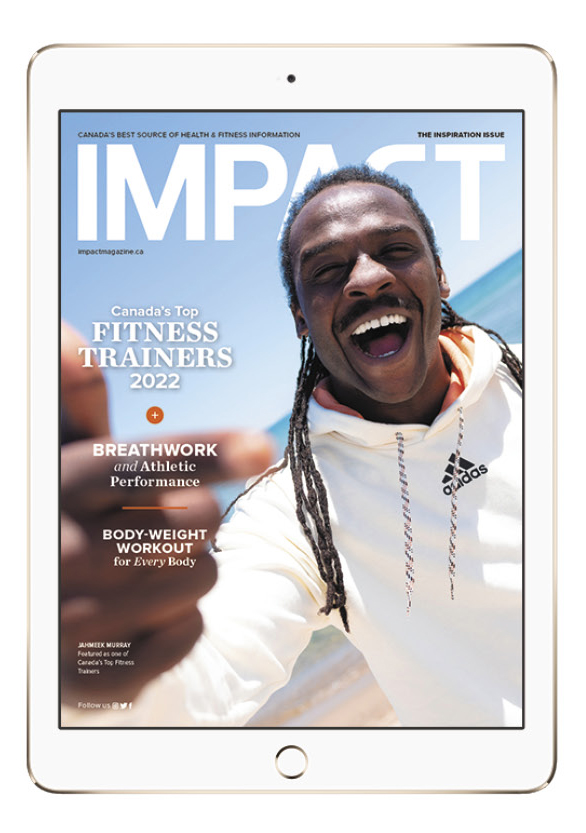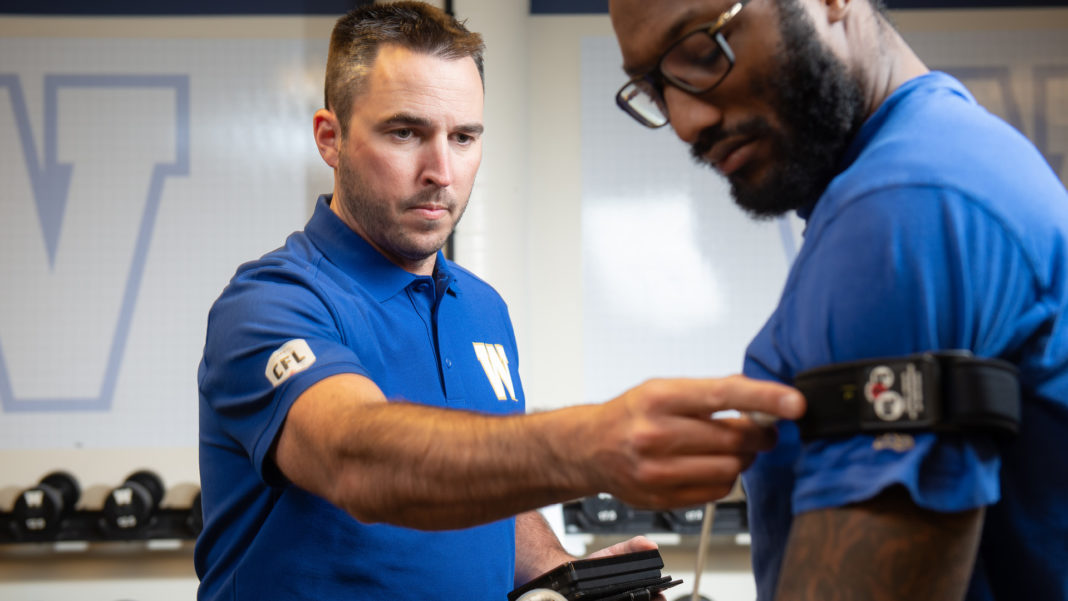Whether you’re interested in a different way to get results in the gym, trying to keep up with strength training after an injury, or you are a pro athlete looking to get to the next level, blood flow restriction training is one way to bio-hack your muscles.
Blood flow restriction training (BFRT) involves low-intensity exercise that provides similar benefits to high-intensity training. The technique has been thoroughly researched and studied for decades, but has only been gaining popularity in the world of sports over the past few years as athletes like fitness influencer Ben Greenfield, downhill skier Mikaela Shiffrin incorporate it into their routines.
As head athletic therapist with the Winnipeg Blue Bombers Football Club, I oversee the health and well.being of every player on the roster. After receiving the appropriate training through KAATSU Global Inc., I started using BFRT on athletes in 2019, and have noticed several benefits throughout the last few seasons. ‘Kaatsu’ is a Japanese term meaning ‘added pressure,’ and is a patented exercise method developed by Dr. Yoshiaki Sato.
The process includes wrapping the extremity being exercised with an inflatable cuff, slightly restricting arterial inflow. This slows venous outflow at the top of the arms or legs while exercising either arm, leg or core muscles with very low weights but high repetitions.
Using this technique creates a low oxygen environment that causes early fatigue for your slow-twitch muscle fibers during exercise. This activates your fast-twitch muscle fibers, leading to neurological fatigue and an increase in growth hormones, which then leads to a muscle-building effect.
Almost anyone can try this method, including the elderly and people with injuries or disabilities.
By using very light weight or no weight, you’re fatiguing the muscles, creating an increase in strength and muscle size, without causing the stress you would with traditional exercise. This means you get the benefits of increased muscle-fibre recruitment, hormonal response, strength and muscle mass while doing roughly half the work.
This method works well on injured athletes who can’t typically resume their regular exercise programs. Since BFRT involves very light or no weight, an athlete can work on regaining strength and muscle mass while limiting the effects of muscle wasting and preventing further injury or stress. This results in faster recovery from injury, which can be the difference between wins and losses in the world of pro sports.
BFRT should not completely replace traditional weight training because you won’t develop the same level of connective tissue strength or the neural drive that is created by lifting heavier weight. Beginners should work with a certified health practitioner trained in BFRT and start with a couple of sessions per week. Regardless of experience, BFRT training should be held to a maximum of 20 minutes on legs and 15 minutes on arms.
Is this safe? Yes, but if you choose to pursue this style of training, it should be under the supervision or consultation of a professional trainer with appropriate training.
Almost anyone can try this method, including the elderly and people with injuries or disabilities. Blood flow restriction training may not be suitable for someone with circulatory problems, so consult a physician before beginning any new exercise program.
Lead image: Winnipeg Blue Bombers head athletic therapist, Alain Couture shows how athletes can lift lighter weights but still get the benefits of heavier weights. Photo by Thomas Fricke

Read Our 2022 Inspiration Issue Digital Edition
Read about Canada’s Top Fitness Trainers 2022. Need new ideas for your next workout. Test your fitness levels and see how you measure up. World-renowned breath expert, Richie Bostock shows us how to breathe correctly, 7 yoga poses for a better sleep, recipes and much more!
















